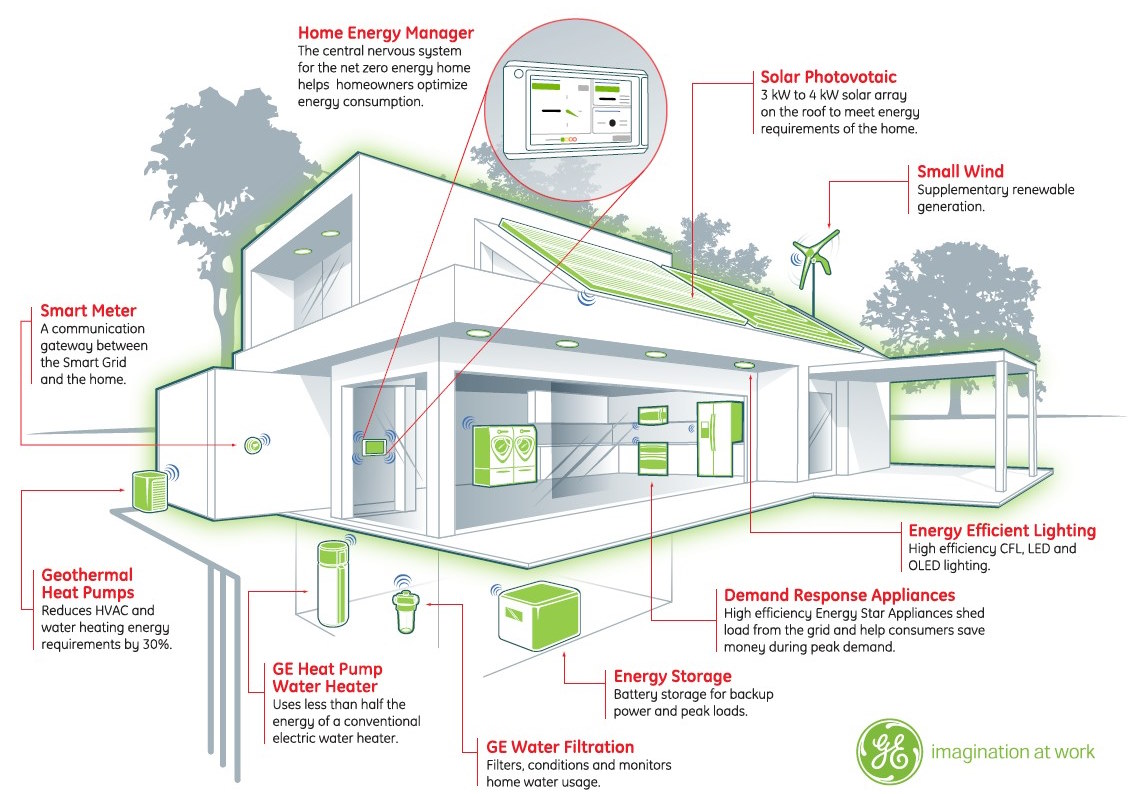Introduction
In the modern world, our homes are filled with electronic gadgets, appliances, and devices that have become indispensable to our daily lives. From refrigerators to computers and smartphones, we rely heavily on electricity to power these essentials. However, power outages are an unfortunate reality that can disrupt our routines and leave us without access to the comforts and necessities we often take for granted. This is where power backup for the home comes into play, offering a lifeline during these unexpected interruptions. In this comprehensive article, we will explore the various aspects of power backup for homes, including the types of backup solutions, their benefits, and considerations for choosing the right one.
Reliable Power Systems are Key
A reliable power backup for home is an indispensable solution, particularly in regions prone to frequent blackouts like South Africa. Understanding what does a power inverter do is key to ensuring a continuous power supply during outages. South Africa’s market offers a plethora of options, including UPS South Africa, or Uninterruptible Power Supplies, which are crucial components of a home inverter system. These devices keep your essential appliances running, allowing for seamless transitions when the main power source fails.
When considering how long will a 12V battery last with an inverter, it’s important to note that the duration depends on various factors, such as the battery’s capacity and whether you have a deep cycle battery inverter setup. In South Africa, home inverters have become a popular choice for homeowners seeking to mitigate power interruptions, and they are well-suited for the task.
One common question is, can I use an inverter to power my house? The answer is affirmative, but selecting the right inverter for home South Africa is crucial to meet your energy needs. To maximize efficiency, it’s essential to know how to use an inverter properly. You can minimize energy consumption by understanding how much power does an inverter draw with no load and using it judiciously in your home.
In South Africa, where solar systems are rapidly gaining popularity, combining solar electricity with a well-chosen inverter can be a game-changer. Solar power South Africa is a sustainable and reliable solution for homeowners, and integrating it into your house inverter system ensures consistent power even during load shedding events. Solar installation in South Africa has seen significant growth, offering an eco-friendly alternative to traditional power sources and contributing to backup power supply for home South Africa.
Selecting the best inverter and battery combination for home is crucial to fortify your home against power outages, making it a wise investment for any homeowner in South Africa. South Africa inverters play a pivotal role in ensuring that your home remains well-lit and functional, even when the grid goes dark.
The Importance of Power Backup
Power outages can occur for various reasons, including severe weather conditions, infrastructure failures, or scheduled maintenance by utility companies. Regardless of the cause, the consequences of a power outage can be significant. Here’s why power backup is essential for every home:
1. Preserving Food and Medications:
A power outage can lead to the spoilage of perishable food items in your refrigerator and freezer. Additionally, if you have medications that require refrigeration, a power backup system can prevent them from becoming ineffective.
2. Maintaining Comfort:
During extreme weather conditions, a lack of power can result in uncomfortable indoor temperatures. Power backup solutions can keep your heating or cooling systems running, ensuring a comfortable living environment.
3. Keeping Communications Active:
In emergencies, staying connected is crucial. Power backup systems can keep your phone, internet, and home security systems operational, enabling communication and security monitoring.
4. Preserving Electronics:
Sudden power surges or fluctuations can damage sensitive electronic devices like computers, televisions, and gaming consoles. Power backup solutions provide surge protection, safeguarding your valuable electronics.
5. Avoiding Data Loss:
If you work from home or store important data on your devices, a sudden power loss can lead to data corruption or loss. Power backups allow you to save your work and shut down your devices properly, preventing data loss.
Types of Power Backup Solutions
There are several types of power backup solutions available for homes, each with its own advantages and applications. In residential areas, power backup systems have become increasingly essential to cope with frequent power outages. These backup power systems typically utilize different types of batteries, such as sealed lead-calcium batteries, semi-sealed lead-calcium batteries, and fully sealed gel batteries. Charging the batteries in a home power backup system is crucial to ensure continuous electricity during outages. During power outages, you may need to remove some of the connected appliances to conserve energy when relying on home power backup systems. One of the advantages of these products is that you don’t have to install them manually; the process is fully automatic. This means that when there’s a disruption in the main power supply, the battery charger automatic changeover switch seamlessly activates, ensuring a continuous power supply to your home.
Additionally, these backup power systems are designed to supply power in proportion to the load drawn, ensuring efficient use of stored energy. For residential areas prone to intermittent power supply, these systems offer a reliable and convenient solution, contributing to greater comfort and peace of mind during outages while eliminating the need for constant monitoring and manual intervention.
1. Uninterruptible Power Supply (UPS):
- Standby UPS: These systems provide short-term power backup and are suitable for protecting computers and essential electronics. They offer surge protection and a seamless transition to battery power during outages.
- Line-Interactive UPS: Line-interactive UPS systems offer improved performance compared to standby units. They provide voltage regulation to handle minor fluctuations and a faster transfer time to battery power.
- Online (Double Conversion) UPS: Online UPS systems offer the highest level of protection. They continuously convert incoming AC power to DC and then back to AC power, ensuring a seamless transition to battery power without interruption. They are ideal for critical applications and sensitive electronics.
2. Generators:
- Portable Generators: These generators are versatile and can be used for various power needs. They are typically fueled by gasoline or propane and can provide backup power to selected appliances through extension cords.
- Standby Generators: Standby generators are permanently installed and can automatically provide backup power to your entire home when the main power supply is disrupted. They are often fueled by natural gas or propane and are a reliable solution for extended outages.
3. Battery Backup Systems:
- Solar Battery Backup: If you have a solar panel system, a solar battery backup stores excess energy generated during the day for use during outages or at night, reducing reliance on the grid.
- Home Battery Storage: These standalone battery systems can be charged from the grid or renewable sources and provide backup power when needed. They are suitable for homes looking to reduce their reliance on the grid.
Sealed lead-calcium batteries and their semi-sealed counterparts are maintenance-free, eliminating the need for constant refilling and maintenance that traditional lead-acid batteries require. This convenience makes them ideal for residential areas where homeowners prefer hassle-free power backup solutions. When the power goes out unexpectedly, the battery charger automatic changeover switch detects the disruption and immediately transfers the load to the connected battery bank. This allows you to continue using essential appliances and lighting even during unplanned power failures.
Selecting the Right Power Backup System
Choosing the right power backup system for your home involves considering various factors:
1. Power Needs:
- Assess your power requirements to determine the capacity of the backup system you need. Consider the appliances and devices you want to keep running during an outage.
2. Budget:
- Different power backup solutions come with varying costs. Balance your budget with your power needs to find a system that meets your requirements.
3. Duration of Backup:
- Determine how long you need the backup power to last during an outage. Some systems offer short-term backup, while others can provide power for extended periods.
4. Ease of Use:
- Consider the ease of installation and operation. Some systems require professional installation, while others are more user-friendly and can be set up by homeowners.
5. Maintenance:
- Regular maintenance is essential to ensure the reliability of your backup system. Consider the maintenance requirements and costs associated with the system you choose.
6. Fuel Source:
- If you opt for a generator, consider the availability and cost of the fuel source (gasoline, propane, natural gas) in your area.
Conclusion
Power backup for the home is not just a convenience; it’s a necessity in today’s interconnected world. Whether you’re looking to protect your electronics, maintain comfort during outages, or ensure the safety of your food and medications, there’s a power backup solution that fits your needs and budget. By carefully assessing your requirements and considering the available options, you can safeguard your home and loved ones from the disruptions caused by power outages, ensuring continuity in an uncertain world.


